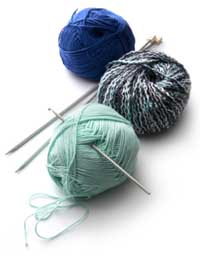 “Gather and knot.” That’s all I ask them.
“Gather and knot.” That’s all I ask them.
It’s all anyone will ever ask of them, really.
So they try.
First, young eyes and minds gather. Stretching fingers of tree limbs catch sky, saturated in blues. Green’s but a fleeting whisper through the woods, the sky all loud and showing through. I watch them see.
Having gathered, then they knot the strands, slow and tentative.
“The wood’s green clouds drift in on spring.” Our just-teen says the words, but his eyes keep searching the landscape, looking for more idea threads.
“I think it’s more like this,” offers younger brother. “Fresh green cloaks the woods all worn and grey from endless winter.”
I nod, smile. They have gathered strings from the world’s web and knotted. These children, their winding cerebrums a net of neurons, have made their own connections, between cloaks and leaves budding, spring and clouds and trees standing near.
All of a child’s learning, reading, discovery, is about connections. Poetry, with its lyrical metaphors, captivates because of surprising associations between senses and scenes. Uncommon connections of ideas birth inventions, creativity, innovations. So we ask children, “Gather and knot.” Connect, connect.
But it strikes me the other day, watching a daughter wrestle with adjectives and adverbs, that education is more than the gathering, knotting, lacing of the world’s silvery threads. Authentic, deep learning ultimately emerges from the most powerful connection of all: the spinning, collecting, braiding of heart strands.
“We, as persons, are not enlightened by means of multiple-choice tests or grades,” writes educator and author Karen Andreola, “but rather by the other people in our lives that we come to know, admire, and love. We are educated by our friendships and our intimacies.” The one who gathers us and knots our heart close is the one whom we emulate. We are educated by those whom we connect to.
So we leave dry texts on the shelf and read what we describe as living books. For children connect with ideas and information when they’re gathered to an author who is a real, knowable person, an author with a unique voice and expressive words who touches a child’s eyes, heart, and thought world. Neurological research clearly indicates that learning thrives and connections multiply when we tuck knowledge into an envelope of feeling, wrap facts in emotive language. Because that is what kindles our hearts. Stirred hearts open, see, make associations.
One of ours sits in early sunlight, bent over books, and blunders through lesson after lesson, gathering little and any knotting attempts dissolving into an undecipherable, tangled muddle. An eraser scrubs through a page, a pencil flies across the room, and I’m baffled at synapses and information that defy connecting. But I remember, this time, that education is more than a gathering and knotting of cerebral matter. I rub tense back, brush hair out of eyes, pick up frayed heart fibers and I knot with simple words: “Can I help? Together, we can figure this out. Want to pray first?” We do, and I repent of all the times I’ve forgotten the connection that makes everything else connect.
Later, in afternoon’s honey light, I watch young nimble hands crocheting, strings gathered and knots tied. Yet there are spaces between the connections. So too we know the inevitable academic gaps, relational holes. But we choose the strings carefully—vibrant words, living books, creative endeavors, unconditional tenderness. Daily we tie close–us, child, the wonders of His world and our Creator. In spite of gaps, we gather and knot all these strands.
This weave holds and we are warmed.
©2008, Ann Voskamp

2 comments for “Making Connections”